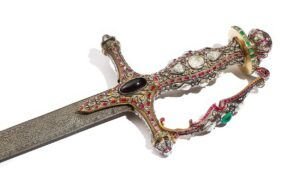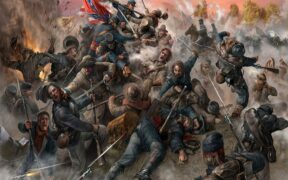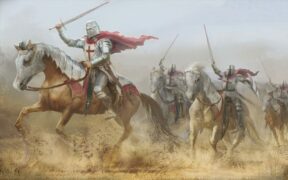Our content features commercial links to our products, committed to transparent, unbiased, and informed editorial recommendations. Learn More
Ceremonial and Battle Effective American Swords
NO AI USED This Article has been written and edited by our team with no help of the AI
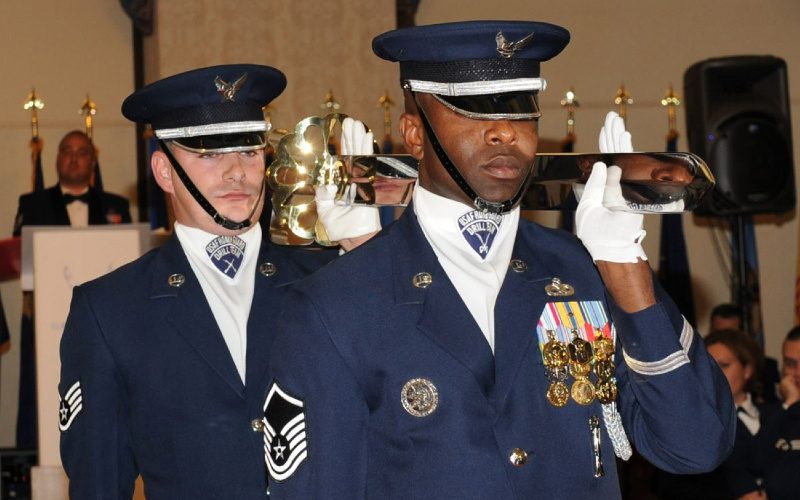
Since the United States of America gained its independence some 250 years ago, it has had a deep and profound respect and love for swords, as can be seen in several of its founding fathers. Benjamin Franklin gifted one of his swords to a French medical student as a sign of peace. George Washington began each day by deciding which of his swords would be most appropriate for the day’s occasion.
The United States was founded during a time when the use of swords during combat drastically decreased as muskets and, eventually, rifles began to replace them. Despite this reality and the fact that the American sword is occasionally disliked by its users, especially in the American Civil War, it has survived every American battle as a ceremonial weapon of rank. Today, the sword serves an important role in many ceremonies in the United States Armed Forces.
This article will review many American Swords used throughout history and those still used today. We will classify them into various categories and discuss their history, traits, and use in battle or ceremonies.
Hanger Secondary Swords

The Hanger sword has a rich history across Europe and the United States. For its effectiveness as a “hanging” secondary weapon, it quickly became one of the most commonly used weapons during the Revolutionary War. It was simple, short, and lightweight for long marches but effective enough to provide self-defense.
During the Revolutionary War, when George Washington was the commander of the Continental Army, he used this saber in battle and as a highly respected ceremonial blade. It saw widespread use in all forms of military personnel as it had different shapes and types.
- Blade – curved, straight
- Guard – knuckle
- Handle – straight, curved
- Length – 25 to 35 inches (65 to 90 cm)
- Weight – 1.1 to 1.7 lbs (0.5 to 0.8 kg)
Artillery Swords

Swords used in artillery may be simple to grasp, as their name suggests. The shortest of the American swords is designed for close combat in the event that the artillery regiment falls into enemy hands and its members need to defend themselves.
The Roman Gladius served as the inspiration for the initial design of Foot Artillery Swords. It was a straight, short weapon designed for infantrymen on the ground. Although it was mostly used by foot artillerymen as a side sword until 1872, it was also occasionally utilized by musicians and motivational instrumentalists. Some of these swords, such as those with an eagle’s head for a handle, might also be used by officers and have special ceremonial significance.

A larger but more lightweight artillery sword was introduced in 1840, which was ideal for those serving in calvary units.
- Blade – straight, double-edged
- Guard – cruciform
- Handle – straight, double-edged, short
- Length – 19 to 23 inches (48 to 60 cm)
- Weight – 2 to 2.5 (0.9 to 1.1 kg)
Cavalry Sabers

Swords were predominantly utilized by the cavalry and not so much by the infantry with the invention of long-range firing muskets, but this wasn’t the case in the United States, where only a small number of engagements and troops were on horseback (8 to 15%) like in the Civil War, for example. Despite that, beginning at the end of the 19th century, American weapon makers began crafting various cavalry sabers.
An early version of the Horseman’s Saber reveals how curved the originals were. Throughout the American Civil War, the strong and radical curvature of the US Cavalry sabers began to gradually reduce, eventually becoming the later Dragoon or Heavy Cavalry Saber. However, given that they were dubbed “Wrist Breakers,” it’s safe to assume that the design and construction of these swords were amateurish at best.

However, as time progressed, the Light Cavalry Saber of 1860 emerged as the most popular and widely utilized sword, and it is this weapon that is most commonly seen in modern LARP reenactments.
- Blade – curved, single-edged
- Guard – knuckle
- Handle – curved, narrowed
- Length – 35 to 45 inches (90 to 115 cm)
- Weight – 1.7 to 2.8 lbs (0.8 to 1.3 kg)
Naval Sabers

The Naval Cutlass was the most prevalent sword used by American Navy officers, both in the present and past. The earliest examples date to between 1808 and 1816, and they were quite distinctive in their largely straight, very thin-bladed design.
However, as time passed, there was a demand for shorter, wider, and deadlier slashing weapons. The Naval Cutlass, as well as the Naval Officer’s Cutlass, was developed in 1860 with the intention of becoming the most effective naval saber possible to be used in confined spaces, such as a ship.

It’s also possible that these American swords saw the longest service, as seen in World War II when American sailors were still using them. Even today, the Officer’s Cutlass is used at multiple fencing schools throughout the country. In the Navy, however, it only draws ceremonial duty.
- Blade – straight, curved, single-edged, broad
- Guard – knuckle guard
- Handle – curved
- Length – 26 to 29 inches (66 to 73 cm)
- Weight – 1 lb (0.4 kg)
Officer Swords

Officer swords were among the most popular blades in the United States in the 19th century. No matter how high an American army officer was in the ranks, they all carried one of these bladed-edged weapons. Some swords were straight, while others were curved and might be classified as commissioned or non-commissioned.
The Marine Officer’s Sword of 1825, also known as the Mameluke Sword (after the Egyptian Mameluke troops, who served as an inspiration to many in the United Kingdom and the United States), is the first officer’s sword used by the United States that was strictly defined by regulation and remains the most popular today.

Officer Swords came in a wide variety, ranging in use by cavalry and infantry to artillery and naval, and even the early coastal guard. Although most of these were purely decorative, some could be employed effectively in combat with a hand guard and sharp blade if necessary.
- Blade – curved, single-edged, straight, double-edged
- Guard – knuckle, cruciform, star-shaped
- Handle – L-shaped, pistol, straight, curved
- Length – 30 to 37 inches (76 to 95 cm)
- Weight – 1.1 to 1.7 lbs (0.5 to 0.8 kg)
Presentation Swords

Presentation Swords are today the most popular American Swords that were traditional gifts given to officers as tokens of esteem and commendation for their service or heroic acts. Most of them are used for promotion in the armed forces, but some might signify high office or even representation in Congress. The Presentation Swords awarded for The Medal of Honor are the most prestigious, expensive, and highly prized.
According to some antique sword collectors, there’s also the possibility that they’re not actually sharp or battle-ready in the first place despite their elaborate decoration and style, giving them strictly ceremonial use.
- Blade – straight, double-edged, curved, single-edged
- Guard – cruciform, knuckle, basket, narrowed
- Handle – straight, curved
- Length – 18 to 50 inches (45 to 127 cm)
- Weight – 2.2 to 5.5 lbs (1 to 2.5 kg)
Modern Military US Swords
Swords may seem irrelevant in modern military conflicts, but they serve an important purpose for the United States Armed Forces. They are emblematic of the prestige, strength, tenacity, and willpower every service member aspires to achieve and represent. Here are just three examples of the US Army’s most popular swords.
| Marine NCO Sword | US Air Force Sword | US Army Sword | |
| Blade | Saber, curved, single-edged | Saber, straight, curved, double/single-edged | Curved, single-edged |
| Guard | D-type, basket hilt | Straight, curved, crucifix, D-type | Straight, curved,D-type |
| Handle | Curved | Straight | Straight |
| Length | 26 to 34 inches (66 to 86 cm) | 30 to 34 inches (76 to 86 cm) | 30 to 34 inches (76 to 86 cm) |
| Weight | 3.3 lbs (1.5 kg) | 1.2 to 1.4 lbs (0.4 to 0.6 kg) | 1.2 to 1.4 lbs (0.4 to 0.6 kg) |
Marine NCO Sword
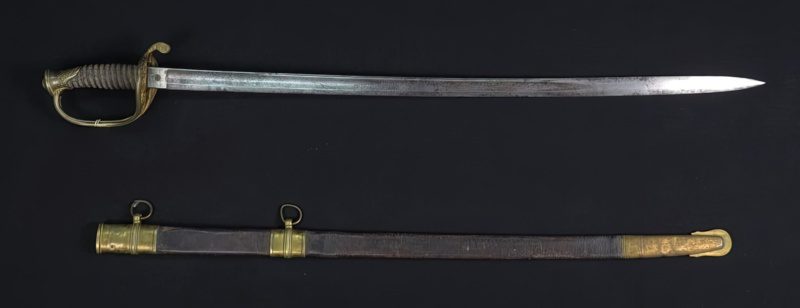
The Marine Corps’ current ceremonial sword was designed after the Foot Officer’s Sword of 1850. However, Marine Corps officers, such as captains, colonels, generals, and lieutenants, typically utilize the Mameluke sword design, also commonly referred to as the Marine Officer Sword. These swords are a fundamental symbol of the Marine Corps and are present at all ceremonial events.
US Army Sword

The Model 1902 Officer’s Blade, a curved, single-edged sword, serves as the inspiration for the standard issue sword used by the United States Army today. Henry V. Allien & Company created this sword after the founder conducted research and experimentation in Europe to determine what would make the ideal design for an infantry and cavalry blade. Although its modest weight has drawn criticism, this sword serves mostly a ceremonial function.
US Air Force Sword

Airmen in the United States Air Force receive their own distinctive sword not only as a gift but as a sign of rank. Although the basic structure is based on the 1902 model, the Order of the Sword is where things get exciting. Since 1978, this program and its accompanying award have been held in the highest regard. The recipient is presented with a massive two-handed Arming Sword, which is often carried by two military personal due to its impressive size.
Masonic Swords
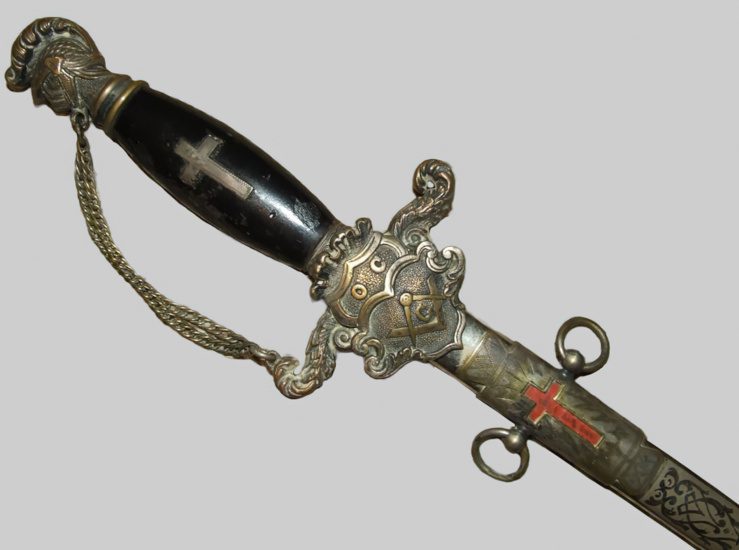
In America, the Masonic Swords are the ones most commonly associated with the mystery of the Freemasons, making it one of the most popular. The name originates from the Freemasons organization, which originated in early 18th-century England but today has its current headquarters in the United States.
Masonic swords are rarely used in actual combat and are used exclusively for ceremonial use. They have aesthetic value and monetary worth according to their age and previous owners. The Masonic emblems, especially the compass, are one of its defining features. Sometimes it may or may not feature a Knight’s Templar cross too.
- Blade – straight, doubled-edged, wavy fire-like
- Guard – cruciform
- Handle – straight
- Length – 15 to 49 inches (38 to 125 cm)
- Weight – 2.2 to 5.5 lbs (1 to 2.5 kg)
Use of the American Swords
American Swords can have either a single or double-edged blade, and are typically wielded with only one hand. Their speed and agility in both cutting and thrusting make them ideal for close combat. Some of them are highly decorated and ceremonial, while others, although veterans of battles and wars, were neither used all that much nor liked by their users.
Warfare
American Swords were intended for use in combat, given their historical roots. Many famous conflicts utilized them, including the American Revolution, the War of 1812, the American Civil War, and to a small extent, World War II.
It must be said, for the truth’s sake, those who used these swords generally did not enjoy using them. Even by the middle of the 19th century, most soldiers had never handled a sword competently or received any formal training in the art. It was foreign to them because they relied on rifles more, and the fact that some of these swords’ curved blades weren’t professionally designed only made things worse.
To quote John S. Mosby, a commander in the Civil War known for his lightning-quick raids:rnrn“but the only real use (talking about sabers) I ever heard of their being put to use was to hold a piece of meat over a fire for frying. I dragged one through the first year of the war, but when I became a commander, I discarded it. The saber and the lance may have been good weapons in the days of chivalry … [but are] of no use against gunpowder.”
Ceremonial
The ceremonial significance and use of American swords are unparalleled. Most soldiers were awarded swords for their service and were expected to lead troops armed with muskets, rifles, and revolvers. A ceremonial American sword was presented to each soldier in recognition of their service and advancement through the military’s ranks.
Many swords of great soldiers or leaders not used in battle are highly sought after and well-respected. In today’s American Army, many ceremonies and parades are performed with a sword in hand.
Modern
Most Americans who are interested in swords desire to own at least one replica or antique sword from the United States because they see them as a valuable piece of history. Collectors will go to great lengths to get them due to their high worth.
All of these swords are staples in 19th-century American War reenactments. You’ll probably run into one of these at any live-action role-playing (LARP) Civil War or Revolutionary War you attend. They’re also very popular in today’s media, appearing in countless films, anime, and video games.
In the United States and elsewhere, you may find a plethora of professionally organized sword schools that will gladly instruct you in the ways of the American Sword. Also, it can be said that they are all very interesting to try out and very beginner friendly.
History of the American Swords
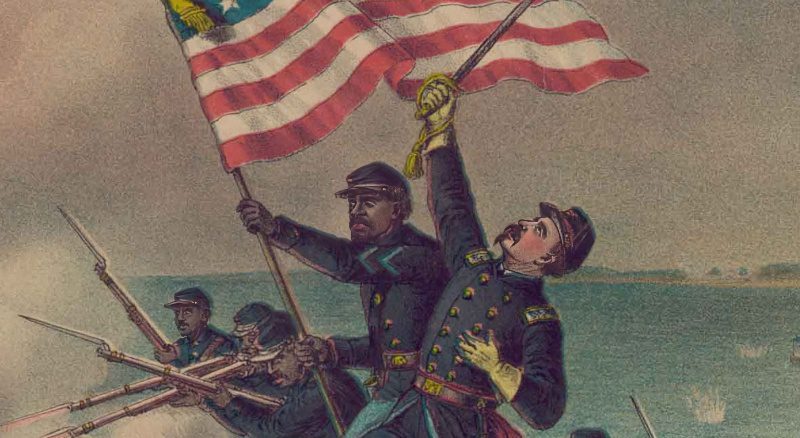
Swords of the United States have their roots in the European style of swords. It was during 18th and 19th century France when many beautifully designed swords were being crafted, which directly inspired the creation and design of the American swords used in their battles.
Although plenty of swords were made during the 19th century in the United States, most were upgraded versions of the previous types. Designs were usually kept until the weapon was fully withdrawn from use.
These here are the periods when the American Swords changed the most:
- Revolutionary Period – 1774 – 1800
- Federal Period – 1800 – 1832
- Mexican War – 1832 – 1850
- American Civil War – ~ 1860
- Post War
The United States was home to a thriving sword manufacturing business, including the well-known Ames company, but its products weren’t universally well-received by the military. Many soldiers had yet to be trained with a sword and still considered them strange and unfamiliar objects.
That didn’t change the ceremony and the power that the swords represented. Most of the founding fathers, as well as notable names in war, were known to own a sword, and today American antique swords are some of the most highly valued.
Conclusion
Whether in New York or Los Angeles, you will most likely see a sword store accompanied by many American Swords. Though they are no longer used in combat, their ceremonial use isn’t any less significant. American swords remain an important element of the US military tradition today.
